“Battlegroup” WW2 Tactical Wargame Part Two – Fire & Movement
May 23, 2016 by crew
Good day, Beasts of War! @oriskany here, welcoming you to another instalment in our article series about what has got to be one of the most underrated historical wargames on the market today. I refer, of course, to the epic masterpiece that is Battlegroup, presented by Ironfist Publishing and Plastic Soldier Company.
For those just joining us, please take a moment to review Part One of our series (presented in collaboration with Piers Brand, BoW @piers), where we introduce the game and review its fundamentals. For now, however, it’s time to hit the gas and thumb off that safety … as we look at some of Battlegroup’s rules on fire and movement.
Movement
Movement in Battlegroup is deceptively simple. Units of different classes (infantry, cavalry, towed guns, and man-handled gun) have rates of movement in inches, one rate for on a road, a lower rate for off-road. There are even rates for bicycles. Don’t laugh, many early-war armies made great use of bicycles in light infantry or recce units.
Each type of vehicle has its own movement rate, based on its historical speed. The differences between road and off-road movement are typically much higher for wheeled vehicles than for tracked vehicles, but each vehicle type is individually listed so players can see how these actually vehicles moved in combat without a lot of memorization.
Battlegroup also has elegant rules for moving through “difficult terrain” or over obstacles. Usually, you just roll a d6 and take that many inches off the movement rate. This ensures that not all hedgerows are equally thick or dangerous, and you won’t really know until the driver hits the gas and actually tries to plough throw it.
So-called “dangerous” terrain is worse, it leaves vehicles with only d6 inches LEFT to their movement. In either case, however, vehicles are never completely stalled, and they don’t lose their shot if they were given a “move and fire” order. Similar rules, by the way, are also employed when a vehicle tries moving in reverse gear.
Opening Fire
Finally, it’s time to pull some triggers. In actual combat, however, it’s never that simple. Small arms fire, high-explosive fire, armour-piercing fire, indirect fire from howitzers and mortars … all affect armoured, soft-skinned, infantry, building, and area targets differently.
Fortunately, Battlegroup presents a system that retains the nuance of different kinds of fire against different kinds of targets, all without overloading the player with complexity. The player simply has to choose what kind of fire he’s ordering a given unit to apply against a certain target. These choices are briefly outlined below.
Area Fire
“Area Fire” is the first option for firing on an enemy unit in Battlegroup. Put most simply, this is when you spray a target area with as many bullets and shells as possible, trying to pin down an enemy unit. Casualties can be inflicted, but usually the idea is to suppress the enemy so that other friendly units can safely move.
Area fire can be undertaken with small arms, machine guns, or high-explosive shells. Players find a “Rate of Fire” (what type of weapons are firing and how many), and consult a chart, cross-referencing the range and the type of target. High explosive rounds from artillery and mortars use a similar system (see below).
If this Area Fire check is successful, the target unit gets to roll a cover save. The probability of this save depends on the type of target and the type of cover it has (if any). Obviously, infantry in the open are more prone to being pinned than dug-in tanks. If this save is failed, the unit is “Pinned” and gets no actions until the pin is removed.
Aimed Fire
Keeping the enemy pinned is all well and good, but when it’s time to actually inflict some casualties, “Aimed Fire” is usually the preferred option. The rules are slightly different for small arms, high explosive shells, and armour-piercing shells, but Battlegroup’s design keeps the complexity down while retaining tactical option and realism.
Small arms, machine guns, auto cannon, and flamethrowers again use the “Rate of Fire” measurement described above, and have different difficultly numbers they have to beat at different ranges in order to hit infantry, deployed guns, or soft-skinned vehicles. These targets get a save, but for every hit that is not saved, a casualty occurs.
Aimed Fire using high explosive shells is usually delivered by assault guns or tanks using some of their high explosive (as opposed to armour-piercing) ammunition. You only get one roll to hit, and it’s usually not easy. If you score that hit, however, the potential damage against infantry, deployed guns, or soft-skinned vehicles can be a horrible glory.
Aimed Fire using armour-piercing shells is widely considered (well, considered by me, anyway) to be the apex a Battlegroup game. Tanks fire supersonic bolts of metal at other tanks, enough said. Of course antitank guns and even infantry rockets get into the mix, but in end it’s about killing that steel beast before he does the same to you.
This kind of fire makes similar observation and to-hit rolls. If a hit is scored, however, the effects are handled differently. Each type of gun has a penetration value at various ranges, which is cross-referenced against the target’s front, side, or rear armour. A target number to penetrate the armour is revealed, to be beaten on 2d6.
Indirect Fire
In World War II, death could be a supremely impersonal affair, delivered from dozens of miles away by a man armed with just a map, a protractor, and a radio. This is indirect fire, one of the deadliest killers on the battlefield. Many World War II games have indirect fire, but in my opinion Battlegroup comes much closer to “getting it right.”
First of all, as a lowly captain, major, or (at most) lieutenant-colonel, you don’t usually command the artillery. You REQUEST it. The likelihood of whether you’ll get it on a given turn depends on your communications check, spotting team, and especially on your engagement’s command priority in the regiment or division’s larger context of battle.
Battlegroup also has you drop a spotting round, just like a real artillery mission. Depending on where that round lands, you can commit to the full “splash” fire mission or abort, especially if that spotting round drifted closer to your men than the enemy. Blind targets can be hit behind buildings or on reverse slopes, just like in actual combat.
Once an artillery mission starts landing for real, it effects targets starting at the epicentre of the strike and working its way outward. These shells “have no friends,” so be careful of friendly fire. Infantry, deployed guns, soft-skinned vehicles, and open-topped AFVs beware, but enclosed tanks can usually weather these storms with little trouble.
There’s even an illustrated on-line tutorial for artillery fire mission rules in Battlegroup, which you can find HERE. In this walkthrough, Piers takes the player step-by-step through the process, using game table photos, displaying dice rolls, and referencing pages and rules in the Battlegroup rulebook. Even I can get it right!
Of course, there are plenty of other ways for you to ruin your opponent’s day on the battlefield … airstrikes, anti-aircraft fire, mines, and so on. We’ll cover some more in the articles to come, but if you really want the details, head over to the Iron Fist Publishing or Plastic Soldier Company sites and see what’s on offer.
That’s it for now, Beasts of War. Please drop your comments, questions, and suggestions below, and keep the conversation going on this tremendous game.
By James Johnson & Piers Brand
If you have an article that you’d like to write for Beasts Of War then you con get in contact with us at [email protected] to find out more!
"There are even rates for bicycles. Don’t laugh, many early-war armies made great use of bicycles in light infantry or recce units..."
Supported by (Turn Off)
Supported by (Turn Off)
"Keeping the enemy pinned is all well and good, but when it’s time to actually inflict some casualties, “Aimed Fire” is usually the preferred option..."
Supported by (Turn Off)































![TerrainFest 2024 Begins! Build Terrain With OnTableTop & Win A £300 Prize! [Extended!]](https://images.beastsofwar.com/2024/10/TerrainFEST-2024-Social-Media-Post-Square-225-127.jpg)









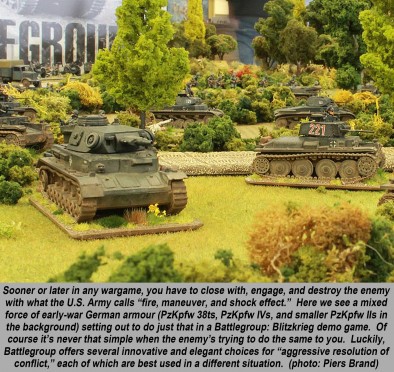
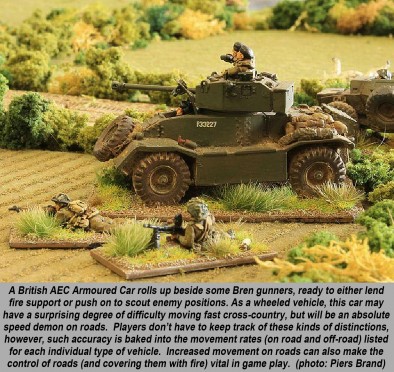
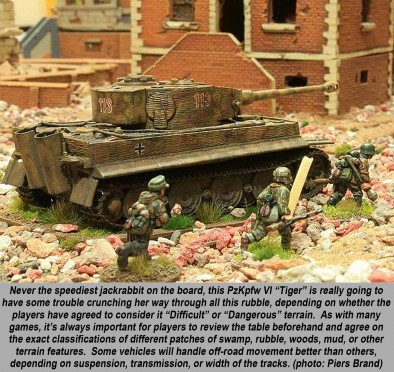
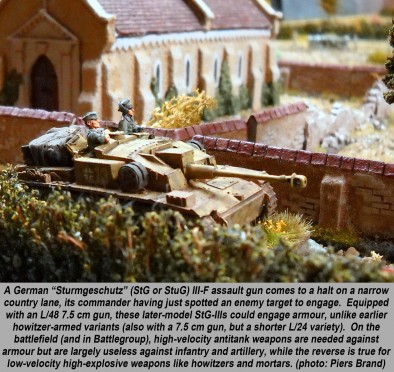
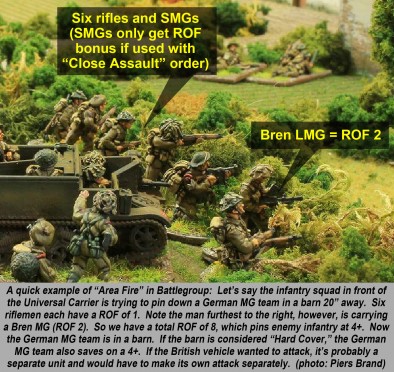
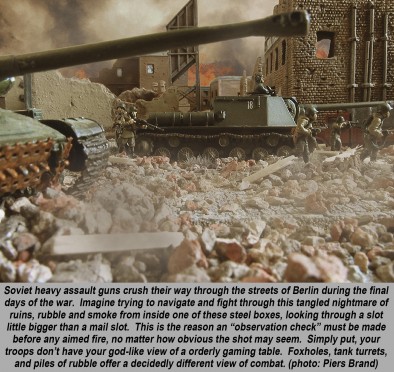
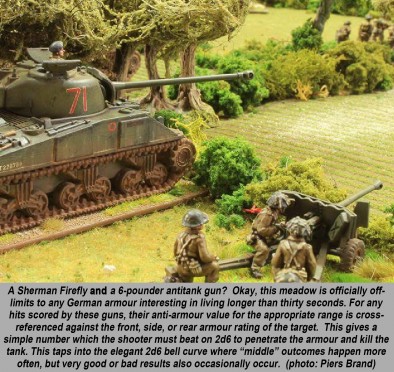
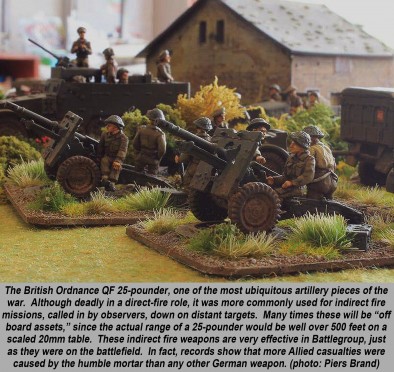


































Another great article. Really can’t wait to play.
This looks quite straight forward. When I compared it to what I have read in the rules it is really simple. I like the area/aimed fire distinction. It makes sense since you not always shoot to kill. I am finding myself more and more intrigued by Battlegroup
Looking forward to seeing a demo video in the future.
Thanks, @cbrenner and @yavasa . 😀 I find that I use area fire on infantry or other soft targets, before assaulting the pinned enemy units with other friendly units that are close by, classic “fire and maneuver.” A little cliche, perhaps, but’s its a cliche because it works. 😀 It requires a bit of finesse, though, to have your own maneuver elements close enough to take advantage of the pin after your fire / overwatch element does its thing. You also have to watch out for enemy units that may be waiting with “ambush fire” orders. Aimed Fire is probably… Read more »
There is a reason my Fall of the Reich Soviets never leave home without my 203mm howitzer for those tricky dug in Germans…
B4 howitzers? Ooof … you’re not messing around, are you? 😀
http://www.militaryfactory.com/armor/imgs/203mm-model-1931-b4-self-propelled-howitzer.jpg
It deals nicely with fortified buildings…
“Private Ivan!”
“Yes, Sergeant Pavel?”
“That building over there offends me. Remove from this space-time continuum!”
“Da, Comrade Sergeant!”
A demo video, @bwanajoe ? That’s not a bad idea … 😀 I’d be afraid of getting some of the rules wrong, though, @piers is naturally the real expert on the system.
You could play Piers!
How does the jump to 28mm affect range since the game is designed for 15mm? I’ve tried to check on thier website, but to be honest, these articles do a much better job of explaining the game than anything I’ve found officially. Nice work.
Thanks very much, @bwanajoe – but if I played @piers I would lose every game! 😀 There’s also that whole Atlantic Ocean thing … 🙁 The game is originally designed for 15 or 20mm, I think most people play with 20mm. I prefer 15mm just because I have most of that already from my old Axis & Allies 15mm days and I always use a smaller scale so the battlefield itself is larger by comparison to the units (most miniature games put way too much hardware in way too small a space IMHO). Honestly I’ve never played this game in… Read more »
All the people I know who play in 28mm don’t change anything.
Consider the beating to be character building… Plus, you can write-off the trip as a “business expense”.
Thanks for info. I own all 28mm from BA and I don’t have the room for an all new scale!
losing, that would be for demonstration purposes off coerce @oriskany ?
This is all just about people wanting to see me get my ass kicked, isn’t it. 😐
no its all educational.
damnit @oriskany you are determined to bankrupt me by making me want to play games i cant afford to get into right now lol!!!
Cracking work though, this is definitely on my need to give it a go list!
Hey, @nakchak – it’s not my fault that these games are all so awesome, or that we don’t get a winning lottery ticket along with our “gamer’s gene.” 😀
Thanks very much, though. Again a hundred thanks go to @piers for all his epic photos. 😀
@oriskany “There’s even an illustrated on-line tutorial for artillery fire mission rules in Battlegroup, which you can find here.”
Where, here? There doesn’t seem to be a link 😉
Gotcha. The copy / paste from my draft doc must not have translated into the web page layout.
Here is the link @piers sent me.
http://www.guildwargamers.com/phpBB3/viewtopic.php?f=321&t=30869
Again great article, thank you!
“Don’t laugh, many early-war armies made great use of bicycles in light infantry or recce units.” – Singapore was captured by the Japanese infantry on bicycles, which allowed troops to carry more equipment and swiftly move through thick jungle terrain. Obviously they used other troops as well but the ‘bicycle infantry’ gave them a great advantage and surprised the British troops.
I have one questions in BG are the players basing there 15mm infantry on single bases? If I would use FoW 4 models per base approach do I need to mark wounds on them?
Some use singles, some use multi bases and other use a combination of the two… indeed Warwick does that with his 20mm.
You need to track casualties on multi bases, I have seen it done with dice, counters and dead figure markers.
All my 20mm support weapons are multi base vignettes and I either stick a dice on it or mark it with a casualty model.
Absolutely, @donlou , who can forget the “bicycle blitzkrieg” down towards Singapore?
As I remember it, the Japanese didn’t ride the bikes (the had something like 20,000 for 60,000 men) but slung their heavy packs over them and wheeled them alongside, allowing the Japanese to out-march the British through the dense jungle terrain of the Malay Peninsula.
We use the FoW bases with little dice as markers to track casualties until the last hit removes the base.
One of the greatest things about Battlegroup: the ability to use miniatures that may have originally been purchased, built, and painted for other systems. No big investment in cash or hobby time, for gamers who already have some WW2 forces built up.
20mm isn’t really the favourite scale of mine to be honest but I’m more and more tempted..
@piers and @oriskany are not helping either!
Another article like this and my inner defence ring will crumble completely. Surely there are tons of cheap-ish plastics around in 1/72..well, I might pop over to eBay and have a look. Not to buy, just browsing of course.
(Yeah, right!)
Plastic Soldier Company…
@oriskany : great article 🙂
I’m looking forward to the rest, but my wallet doesn’t …
Is the difference between the Bren and the German equivalent in this game more than rate of fire ?
This video by LindyBeige claims that the German equivalent was less accurate and had a more defensive role within the unit when compared to the Bren which was (supposed to be) more useful during an assault :
https://www.youtube.com/watch?v=VXQygRVvEmM
ie : would the Germans have an easier time pinning the English in your example ?
Yeah, I would say that MG34s/42s on a tripod mount would be closer to a “defensive” weapon (company support rather than squad / platoon support).
These kinds of weapons are very useful in assault, but admittedly not by “kicking down the door and firing from the hip.” Pin down the enemy with these things (not too tough given their high ROF) and rush with infantry with MP40s, etc.
It would certainly pin easier as the bipod MG34 has a ROF of 6 compared to the 2 of a Bren… I have to say though I don’t agree with his assumption that the German weapon was a more defensive weapon. It was well used to provide aggressive fire support in assaults. Interestingly Fallschirmjäger units late war tried to retain and find MG34s as it was seen as less accurate than the MG42 and able to provide a larger beaten area. My Grandfather was a Bren gunner and he used to loosen his bipod screws to get what he called… Read more »
From even pre-war the MG was the main attack weapon of the Germans. It supressed while the others in the squad prepared to occupy. So like yourself @piers I don’t really think of it as a defence weapon. @limburger most MG’s were made to be inaccurate. Their function is to lay down a beaten zone a little bit like a shot gun spread. I have spoken to a number of Bren gunners who served in the Australian army during WW2 and most disliked the Bren as it was too accurate and they had to wiggle it in an attempt to… Read more »
Little bit off topic… when ordering the rules (pdfs) it states theyre pending…do they email you the pdfs?
They do.
Thanks!
@piers love the pictures, they add a lot to @oriskany s text
@rasmus – Those awesome photos also added to my sanity and possibly lifespan … taking and gathering photos are always the toughest part of putting these articles together. Getting someone else to do the hard part, I do the easy part … I might be on to something there! 😀
Nice article again
Couple of questions if you dont mind
Is there hidden movement and spotting in the game?
Can you fire inti an area where you think an enemy might be?
Thanks, @torros – I can take a swing at that … Hidden movement – NO, not to my knowledge. Spotting – YES. “Observation checks” must be made before any aimed fire. I don’t think you need it for AREA fire (just rechecked the core rule book – yes I brought it to work in case we got any questions) 😀 You also don’t need observation checks for close assaults. But any AIMED fire, even if its two tanks at 2″ distance, needs an observation check (granted, that’s gonna be a pretty easy observation check, but not automatic due to smoke,… Read more »
Thanks Jim
No worries, @torros , although I feel I do have to add one correction to my response. I’ve been playing a Barbarossa game this week and was reminded that there ARE sometimes automatic observation checks.
“Deployed Gun in the Open – Firing”
“Vehicle in the Open – Firing”
“Aircraft”
These observation checks are automatic, according to the quick reference sheet.
So I guess everyone can see that Tiger parked in the open field, slingin’ out 88s. Kinda hard to miss, I suppose. 😀
Sounds like a great game with easy rules to vary things.
The Japanese used bicycles that much the tyres came off many of the wheels so when the attacked Singapore the British thought tanks were coming. @oriskany
or was that just a story?
Could be. I haven’t heard this. It may be more likely that when the Japanese army covered the distance from their Malay landing sites all the way down to Singapore so quickly, the British commanders must have assumed they were mechanized, which they really weren’t (something like 600 miles in a matter of weeks??) Don’t really know, and I’m not taking time to look it up right now. 🙂
I will get back to you if I find anything.
This system is my favourite go to WW2 wargame. The battle rating system is great game within a game. Many a game I’ve pulled my last chit and blown my BR only to find out after the game my opponent was only one chit from going as well. I also love the flexibility of the size of action you can put on. I’ve played games of 4000 point a side multiplayer games which last the whole day to little 250 point games which can last about an hour. Both give the players interesting problems which are best solved by trying… Read more »
Thanks, @vine022 – I’ve got a 550-point game in progress in my dining room table right now, Barbarossa – Germans vs. Soviets. 😀
Great read!
Will you guys be doing a battle report at the end of the series? Looking forward to the next part 😉
I have the third game in our Ardennes campaign to post up tonight… Still not stopped Peipers advance, but he took a pasting last night on the road to Stavelot (had 1 BR left!)… Stavelot this weekend, need to slow his advance in order to get the campaign bonus for my Yanks for the next game. Not sure it will happen though…
@piers where did you post the Ardennes campaign, I would like to have a look at it especially because the Ardennes offensive is right now the theater I’m most interested in?
Part 1
http://www.beastsofwar.com/groups/historical-games/forum/topic/breakthrough-at-lanzerath-16th-december-1944/
Part 2
http://www.beastsofwar.com/groups/historical-games/forum/topic/ambush-at-ligneuville-17th-december-1944/
Another great series @oriskany ! Some nice models and photos @piers !
Thanks very much, @cpauls1 ! 😀
@oriskany I wonder if this might be my vehicle for near future human/alien combat. Seems like the system is able to handle larger formations (I’m thinking combat team max), and is not overly complex. I realize, of course, that it would require a fair bit of number crunching to extrapolate on future weapons and armour, but I’m good with that.
@cpauls1 – There would probably be some much simpler / more suitable venues through which to drive that kind of project, perhaps Force-on-Force “Tomorrow’s War.” I only say that because Battlegroup is so fine-tuned on specific dynamics of a World War II battlefield. Some of the skeletal mechanics might work, such as orders dice, aimed fire, battle rating counters, and armour vs. penetration. Other maybe not … such as indirect fire and area fire. In a setting like the one you’re describing, wouldn’t most weapons be “smart” of some kind or another? Some kind of structure would also have to… Read more »
Sci Fi… We have a Sci Fi game in the works.
I’m guessing there would be a plethora of smart weapons and drones, and efforts on both sides to achieve dominance and neutralize them. I’ve been stockpiling bits for those systems for some time now (erm… the plastic stuff. No need to call the authorities), as I anticipate that unmanned systems will come to represent not only recce clashes, but also ‘first contact’ between ground forces. I would imagine greater drone capability right down to section level, and unmanned weapon systems controlled as low as platoon level. Also, there are already plans in the works to automate resupply and other echelon… Read more »
@cpauls1
Yep… you got it. 😉
a futuristic version of these rules ?
Cool.
It’s definitely interesting to see how modern/near future warfare would evolve.
@piers I’d be happy to help with that rules set. I’m a 26-year int op, and a contractor beyond.
Apologies for not getting back to you sooner, @cpauls1 – this whole “day job” thing is really starting to wear thin … especially after swimming through an unceasing tsunami of petulant, whiny, entitled, condescending self-importance like we had to today … and no, it’s not my boss, by boss is one of the coolest people there right now. Anyway … (deep breath) Okay, for smart weapons, precision ordinance, etc … I think you and I are both familiar with Arab-Israeli Wars, where they introduced the beginnings of guided tactical weaponry. Other GDW-based 1980s tactical games like Assault give said weapons… Read more »
So I went to buy the rule and a supplement PDF bundle at Plastic Soldier. At checkout, shipping was 15 pounds.
I’m guessing that only part of the bundle is a PDF (mini rules) and part is a physical book (Campaign book)?!?
The only PDF supplement at present is Kursk.
If you have any problems ordering email Anita on [email protected] as I know they were having issues with shipping rates on the hard copy rulebook.
I have played a number of Games of Battlegroup and as far as I can see it is falling into the same trap as other Modern rules (Flames of war and Bolt Action especialy) in that it has no Hidden movement. I cannot see how Modern warfare can be historically recreated when the players always know where the enemy’s troops are and can react to any of their opponents actions immediately. I know that Battlegroup have spotting roles but this is just treated as another die roll as part of the firing sequence, which just over complicates firing without any… Read more »
Well those spotting rolls stop you reacting to the enemy whenever you want… You may know where the figures are, but your boys on the ground may not. Also as your ability to order troops is limited you may also not get to do everything you want. Also Battlegroup generally has rolling reinforcement in most scenarios so not everything is on the table from the start. We are of the view that if you spend time painting your toys, for a game, then it’s best to have those toys on the table to show them off! 😉 That said hidden… Read more »
Has there even been an effective miniatures game with hidden movement? For example, I gotta say I’m no fan of Flames of War’s “magical teleporting antitank guns,” for instance. Those who know me on the site know I’m not a 100% dyed-in-the-wool miniatures wargamer in general. As such, I would totally agree that hidden movement is great in other mediums of wargaming such as hex-and-counters, computer wargames *(no, I’m not talking about RTS “wargames” or MMOs, they’re nothing of the sort), etc. I just don’t see hidden movement working in a miniatures game. As @piers says, it is possible. Double… Read more »
Hidden deployment/movement option: Couldn’t you just set out tokens in the deployment area, numbered 1-50, or 1-100 and then write down what’s positioned on a number on a separate sheet of paper? Most of the tokens would be decoy, of course, which would simulate you knowing roughly where the enemy is, but not knowing exactly where he is, and how he is deployed. You could even move from one token to another just by annotating your notes. Only ‘spotted’ units would be put on the table.
Of course, that would not work as well in a meeting engagement.
@cpauls1 And then you’d keep the counters hidden until the enemy or you succeed at a ‘spot check’ … What would happen if your token meats an enemy token and the team succeeds at a spot check ? ie : the enemy sees you but you don’t ? However at that point you would be playing a hex&counter game with 3D terrain. I think there’s basically 2 options that would result in minimal book keeping while sort of simulating “hidden” movement : (1) “Chain of command” by ‘two fat lardies’ has a hidden movement phase at the start of the… Read more »
I’ll admit that some games I’ve played (albeit hex-and–counter ones) make fantastic use of “dummy counters.” – GDW’s series of WW3 1985 tactical games (Assault, Bundeswehr, Boots n’ Saddles, BAOR, etc) comes to mind. All counters look exactly on the same on the reverse, with only a broad arrow to show their heading and formation (formation = orientation within the hex). When a successful spotting check is made, the counter is flipped, revealing whether it is a real unit or a “D” for dummy. 😀 There was an art and style to using these dummies that was friggin’ crucial to… Read more »
But the ‘poker’ element of using ‘blinds’ and hidden movement is one of the main fun elements of ‘modern’ warfare. Having all the figures on the table and being able to see everyone’s move is just playing Chess on a prettier board, with different pieces.
Well that’s some people’s fun Tom… not everyone has the same tastes and opinions.
Be a boring world if we did.
For me it’s pretty toys, on pretty terrain and a fun game with my mates. 🙂
I agree with you that we play wargames rather than Boardgames to get our nice toys out on the table, but where I have a problem is that these rules are being sold on their historical ‘accuracy’ and without a form of hidden movement this cannot be the case. The problem is that the players have a God like view of the battlefield and units can quickly react to things they cannot see, off table artillery suddenly comes down on troop concentrations that none of the troops on the table could have seen, and tanks amazingly always manage to avoid… Read more »
Well the Germans do get more orders earlier in the war to reflect their better ability at that point so I have to say that difference is reflected. Later in the war it’s a matter of historical perception if you think they should still be receiving such a bonus… personally we don’t. As rule designers we have to base our rules on our historical assumptions and how best to reflect that in a game. Sadly opinions and perceptions don’t always match between individuals. In Blitzkrieg the Germans have more access to officer units, giving +1 orders per turn and also… Read more »
I’d like to chime in, @tompenn , and say that again I agree with … about half … of what you say. Either way, however, your points are very well put. 😀 The problem is that the players have a God like view of the battlefield and units can quickly react to things they cannot see Agree, but I think this is more an issue with miniatures wargaming in general rather than Battlegroup. Off table artillery suddenly comes down on troop concentrations that none of the troops on the table could have seen Disagree. You’ve got to call in a… Read more »
Well you can’t fire ‘blind’ in Battlegroup as your observer has to have a line of sight to where he wishes to place the ‘spotting’ round… So if you are relying on scatter to hit a blind target, most of the time you will be wasting alot of orders…
Right – as I write: “You’ve got to call in a fire mission on a spot on the board that is visible to the unit making the call (within 70″).” Not the best sentence I’ve ever written, admittedly. 😀 Indeed, this tactic uses up a lot of orders, and too many artillery / mortar assets. I’ve only done it once or twice. The “good news” is that you USUALLY get a 2d6 accuracy on that spotter round, which averages (naturally) a 7. And since the radius for effects is typically 10″ – odds are good you might catch the target… Read more »
There are a couple of points to pick on. Firstly, I know the Germans have access to more officers and in general rolls more command dice, BUT because their infantry squads are split into two they need double then number of command points to make them do anything. Therefore if playing playing games with a proper proportion of infantry to tanks the germans are significantly lower of effective command to other nationalities. Secondly with Off table fire, again I understand that the point of impact must be seen by the observer, my point is that because their is no hidden… Read more »
Honestly those Ats were there all the time, you just didn’t see them. Honestly. 😉
…and it’s got to scatter in the right direction too…
Lot of ‘ifs’ with that tactic. I can think of better options for three orders. 😉
It’s easy enough in real life to hit a blind target after the spotting round has landed where you can see it: “Add 100, drop 100,” and left or right corrections by the FOO to approximate where your FFE lands. I suspect it wasn’t much different during the ‘Big Exercise.’ @limburger it was a quick suggestion that I thought would work well in a defensive engagement. In the Canadian Army we wargamed that way while training young officers in Micro-Armour scenarios… long before computers offered better simulations (dating myself in the worst way). Perfect? No. But it got the point… Read more »
Oops, sorry @limburger . I just realized some of my response should have been directed at @tompenn .
I think it’s worth adding that for anyone gaming WW2 or any part of the 20thC then joint SOTCW is worthwhile. It has interesting scenarios and an articles and quite a few companies give a discount for members
http://sotcw.co.uk
Wow, definitely sounds like an interesting organization, @torros . I had never heard of them, thanks for the heads up. 😀
I think they have been around for about 30 years